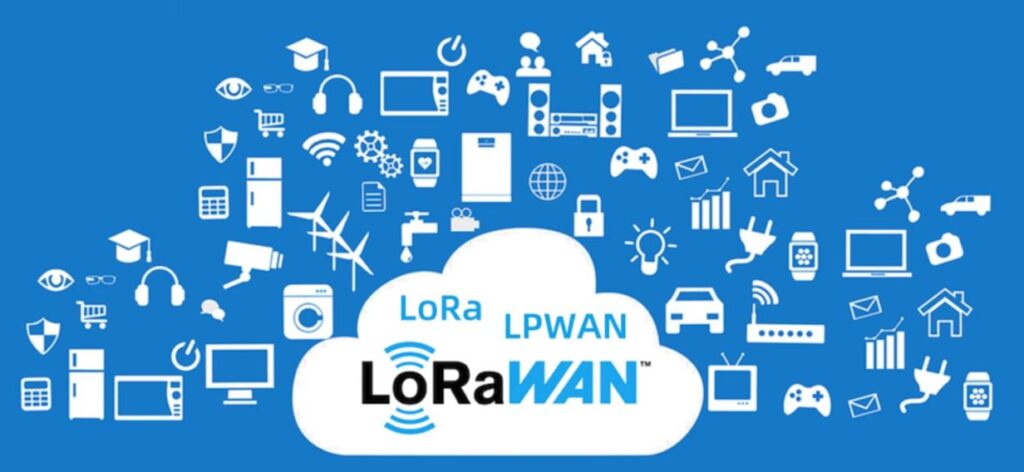LoRaWAN Integrated with Multiple Gateways with Optimization algorithm approach for Improving Downlink Scalability and Reliability (2021)
LoRaWAN provides fascinating features for IoT applications, including low power consumption, long-distance, and secure data transport, and is one of the leading technologies in LPWAN. While LoRaWAN offers many advantages, the lack of downlink capability in large-scale scenarios is one of its fundamental limitations. In LoRaWAN, the efficiency achieves by the use of the data transmission scheme. It makes efficient communication unworkable. However, LoRaWAN subjected to Aloha random access for dense network subjected to a large number of collisions.
It leads to significant challenges in LoRaWAN scalability and reliability. Verified messages involve a downlink frame from the Network Server to be accepted. The use of verified messages is currently strongly discouraged, however, in order to saturate the ability of terminals to transmit messages efficiently. The thesis aims to provide a detailed overview of downlinks’ network capacity effect and suggest solutions to allow low to medium downlink loads identification.
The roots are located and assessed in a real traffic file: half-duplex gateway transmissions (either sending or receiving), the sequential information of the downlink framework, and restriction of the duct duration saturate the belt of the downlink, resulting in higher packet losses. So, in order to deal with these implications, three methods may be employed: multi-gateway, downlink control, and also a frame selection algorithm. Two examiners can test the implementation of a machine by adding real events from a job simulator. The suggested solutions that are implemented increase by 66% in the fixed-line scenario with the same frame deterioration from a single switch will discuss in the thesis. Unfortunately, the frame loss was never more than 5 percent regardless of low and medium traffic loading.
The alternative gateway set for each user can configure to accommodate each transmitting server. At the same time, LoRaWAN technologies and implementations are in total harmony. The use of these solutions in the real-world ensures that the network can become more secure and comfortable to communicate. Many citizens should refrain from committing common fallacies to discourage these matters.
- 20,000 words – 77 pages in length
- Excellent use of literature
- Excellent analysis of subject area
- Well written throughout
- Ideal for computing and networking students
- Outstanding project
Introduction
A definition of LPWAN
The Internet of Things
LPWAN for IoT
IoT devises Operation
LPWAN Protocols
LoRa and LoRaWAN
LoRa Network
LoRa Network Application
LoRa Layers
SigFox
Weightless-P
LoRa Modulation
LoRa’s Chirp Spread Spectrum Implementation
LoRa Physical Layer Packets
Spreading Factor Orthogonality
LoRaWAN
Network Architecture of the LoRaWAN
End-device Classification
Medium Access Control Layer
Medium Access Management for Nodes
Media Access control for gateways
Medium Access Control Commands and Procedures
Limitations of LoRaWAN
Format of MAC Message
LoRaWAN Standards
Topology and Device Classes
Packet Structure and MAC Commands
Encryption and Device Activation
Notable LoRaWAN Implementations
Research Problem
Downlink Traffic Problems
Problem-Oriented Analysis
Gateway’s Half-duplex Nature
Downlink Random Sending in Frame Sequential Server
Suggested Solution
Multiple Gateways
Balanced Gateway Selection Algorithm
Research Objectives and Questions
Research Scope
Signification of Study
Literature Review
Research Methodology
Real Traffic Traces Collection Approach
Optimize Experiment
Packet Forwarder Software
WalT Platform
Event-driven Simulator
Virtual Downlink Traffic Generation
Packets Analysis Algorithm
Downlink Frames Scheduling Algorithm
Expected Findings and Results
Simulation Results
Downlink Traffic Perspectives
Multi-Gateway Architecture
Gateway Selection Algorithms Comparison
SNR-based Selection Algorithm
Balanced Selection Algorithm
Summary / Conclusion
Future Work
References

